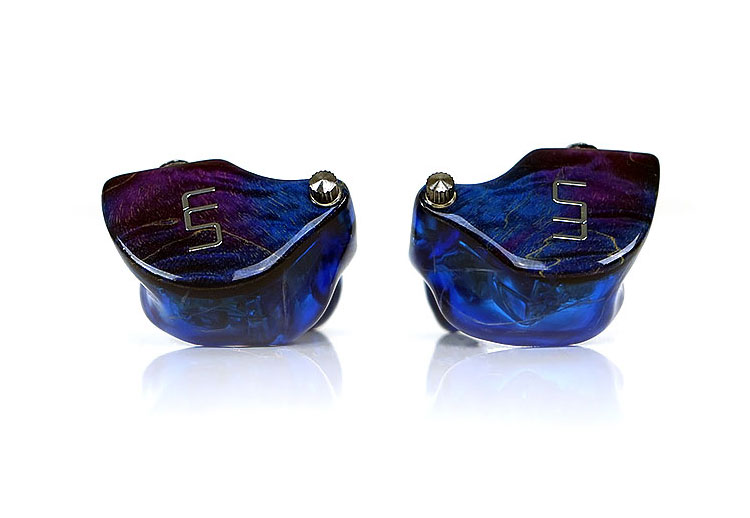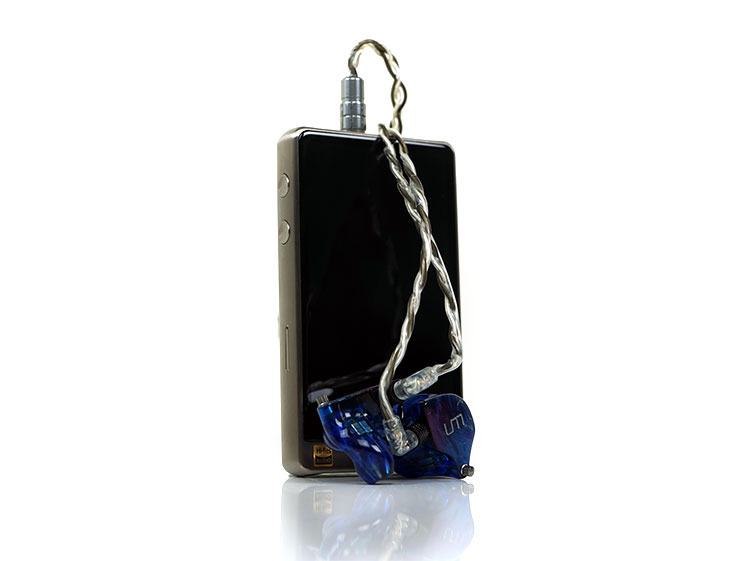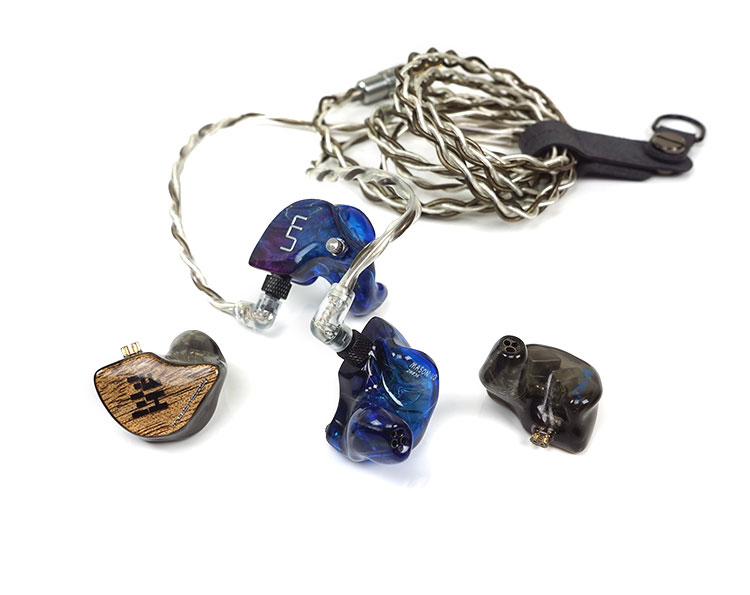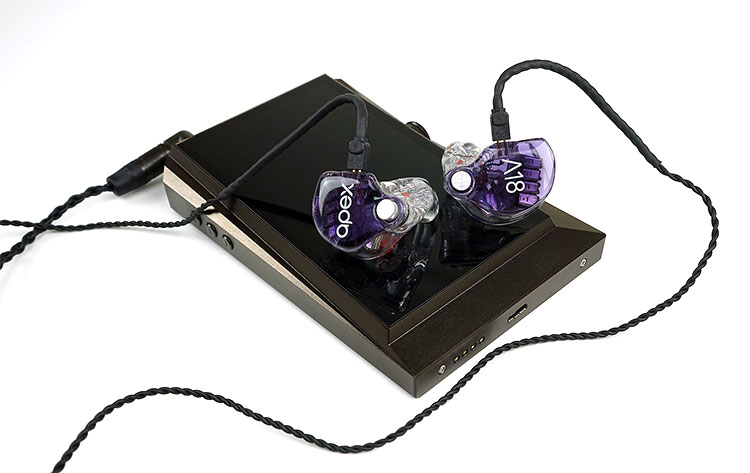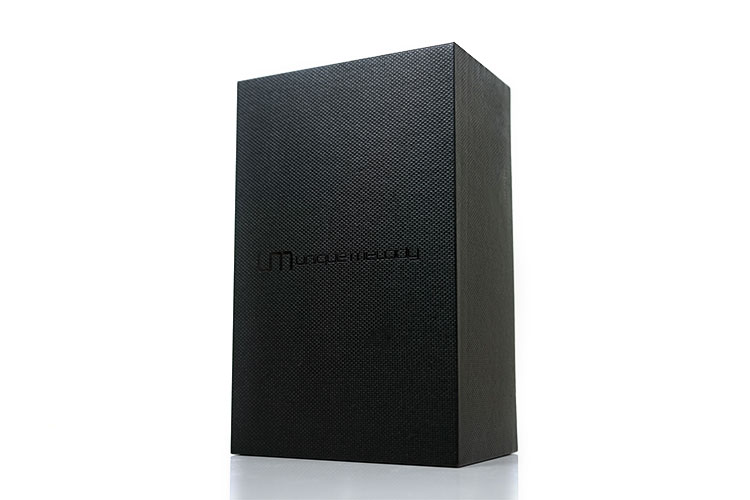Synergy
Efficiency
The Mason V3 is rated at 24Ω and 104dB and is fairly efficient but not super efficient in terms of gain on modest sources and amps such as smartphones. Certainly, it does require more juice than the A18 or the VE8. Both were consistently louder on lower volumes across all sources.
On smartphones such as the Axon 7 and the LG G6 loudness was just ok. However, I felt the staging was reduced in depth and a little of that richness (copper) was lost.
The dynamic range was just ok also. I also got similar results with an iTouch 6th Gen. You do need better output power to get the most out of the Mason V3. The better the source the better the performance from this CIEM.
Noise
The flip side is the excellent noise performance from the Mason V3. With higher noise floors this was the quietest of the 2 competitor CIEMs I matched it against. This included the flagship VE8, A18 though the noise was on par with the previous Maestro V2.
Sources such as the X5iii and the AM3 balanced amp module for the X7ii had no background hiss issues. Portable analog amps such as the VorzAMPduo II, Lear FSM-02 V2 and the ALO Audio V5 in low-gain all very quiet or dead silent.
The only slight caveats were an audible signal in high gain mode on the V5 and a slight channel imbalance on the Lear on a low volume using its Class-A output.
Scaling
Whilst not on the same level as the Vega or Flares Pro the Mason V3 does sound a lot happier on a decent amp signal. It does not need huge power but the dynamic range does get a welcome boost from good portable amps.
Analog amps using a decent line out such as the V5 and VorzAMPduo II sound excellent in either silver or copper. With copper, both will give a rich and smooth presentation with the V5 putting a little more mid-range sweetness compared to the more planted sound of the Duo.
Both do not sound overly warmed up with the copper cable and provide a very natural response. Even the mid-fi Lear FMS-02 V2 Class A output sounded incredibly liquid and “phat” sounding without every becoming bloated or muddy.
With DAC/Amps such as the Hugo and the Mojo, again there were no noise issues. The Hugo 2 delivered the most detail and dynamic range out of the two and kept things fairly neutral. I tended to want to use silver with it to maximize that tonal response. The Mojo sounded great with copper delivering a more planted low end and thicker lower mids. Perfect for modern rock and pop.
Select Comparisons
Unique Melody Maestro V2
US$1,979.00
Technical
The Maestro V2 is the predecessor to the Mason V3 as the company’s former flagship CIEM. It is a 12 BA driver custom monitor rated at 20Ω and 109dB. It is marginally more efficient than the Mason V3 and will require slightly less power and gain. Its noise performance though is equally as good as the Mason V3 across both source DAPs and portable amps tested.
Like the Mason V3 is is a short nozzle relaxed fitting. However, the shell size is much smaller. It does not use the tuning module or dual-tone cable and instead uses a protruding 0.78mm dual pin connection.
I believe this is a stock connection on their mid-range offerings at the time of writing meaning dual-tone could well be high end only. It does not use Dreamweaver shell techniques either. I am pretty sure this will be discontinued if not already done so.
Sound
The Maestro V2 is darker sounding than the Mason V3 and not as detailed sounding. Mids, in particular, are not as open on the Maestro as they are on the Mason with vocals sitting further back and lacking the same level of presence.
The Mason V3 may well be laid back on its top-end delivery but its treble has more sparkle and better contrast and definitely a touch more air than the Maestro V2’s attenuated top end. The knock-on effect is a more spacious and holographic staging quality on the Mason V3 with much better imaging.
The low-end on the Mason V3 also has a bit more depth and presence and certainly sounds more detailed with better texture. The Maestro V2 isn’t lean, not by a long shot but it is not as well defined and rolls off a bit more sub 100Hz.
Technically you can thin out the sub-bass on the Mason V3 with the silver connection and basically turn off the DB-Go module but it still offers a better level of detail.
Vision Ears VE8
€2330
Technical
The VE8 is the 8 BA driver flagship custom monitor from Vision Ears. Rated at 20Ω and 120dB it is significantly easier to drive than the Mason V3 and will require less volume on weaker sources.
Fit
Fit wise it differs slightly in philosophy than UM with a single wide horn nozzle delivery system rather than tubing to the tip. It also has a slightly higher level of sealing pressure and a marginally longer nozzle. Both are still very comfortable and both seal equally as good. However, the VE8 is just that tiny bit more secure in my ear than the relaxed Mason V3 fit.
Cable
The stock cable with the VE8 is utter rubbish compared to the dual-tone cable of the Mason V3. The VE8 sounds way too compressed without a quality silver Litz upgrade cable. The VE8 has no other modification type systems such as the Mason tuning module.
Build
Both look stunning by the way. The VE8 heartwood face plate grain and olive translucent shell are truly special in my opinion. I rated the build and design of the UM in my top 3, this is the number one with Custom Arts lava candy fusion no 2.
Sound
Tonally the VE8 is slightly darker sounding than the more balanced and open Mason V3. The detail and resolution are up a notch with the Mason V3. Particularly in the mids which are slightly further forward and engaging than the VE8. Mind you, the VE8 8 driver design is very competitive. It is hard to believe that the Mason V3 is double the count at times.
The VE8 has a more powerful sub-bass presence and delivers more power and potentially more PRaT than the Mason V3. Even with the copper connection and the DB-Go module turned full on the Mason V3 can’t deliver the same weighted impact as the VE8. The Mason is a little more balanced in that respect which in turn allows the mids to shine a bit more.
Conversely, the VE8 mids are a bit more dipped sounding and less open compared to the Mason V3. Vocals on the VE8 are more neutral in their positioning and do not have the same presence or body as the Mason V3.
The VE8’s lower treble has a bit more bite and sparkle than the Mason V3’s more relaxed approach. The VE8 tonally will sound a touch more “exciting” with more treble/bass contrast. This is particularly so with copper, though the gap closes with the use of the silver connection on the Mason V3.
Overall, I would pick the VE8 for its musicality and excitement and works very well with hard rock, EDM and pop. The Mason V3 I would pick for a slightly more balanced and resolving presentation. It is the more flexible of the two for genre matching and delivers a better vocal experience.
64 Audio A18
US$2999.00
Technical
The A18 is the company’s current custom flagship monitor. The Fourte is only in a universal format. This is an all BA 18 driver masterpiece with Tia technology which is basically tubeless drivers.
The A18 is a hybrid Tia BA design rated at a very low 9Ω and 116dB which makes it fairly easy to drive but not as sensitive as say the Andromeda. Noise control is good but not as good as the Mason V3. Neither the Mason V3 or A18 should be jacked out of a smartphone. You will get volume but the dynamics and staging will get sucked right out of either.
Build & Design
Build wise the A18 is incredibly accurate in terms of fit, seal, and comfort. I have the edge with the 64 Audio creation in that regard. The Mason V3 is very comfortable but with a shorter nozzle, it is not as rock-solid in the ear.
Design-wise the Mason V3 is miles ahead though with Dreamweaver multi-layering shells and far more potential design combinations. UM do their shells by hand; 64 Audio uses a 3D printer. You trade off accuracy for imagination in some respect.
Modules
The A18 also uses a tuning module with excellent pressure attenuation called APEX. The pressure attenuation of the M15 module better than the DB-GO’s capability with the M20 same or slightly less. The DB-GO is adjustable though in terms of bass response whereas APEX is fixed meaning you have to buy them individually.
Cable
The 64 Audio A18 stock cable isn’t great though slightly better than the Vision Ears stock. Neither can hold a candle to the Dual Tone cable of the Mason V3.
Sound
They perfectly complement each other. The Mason V3 is smoother, richer sounding with greater bass weight and an almost euphoric instrumental timbre. The A18 is more neutral sounding, cleaner and more open sounding with greater air and headroom.
The Mason V3 has a better sub-bass presence and a little more mid-bass elevation. Control and imaging are better on the A18 with a very high level of resolution.
The Mason V3 is pretty close in terms of resolution but trades it up for a more natural sound with better vocal presence. You could argue guitar work has more authority and better body on the Mason V3 whereas the A18 is faster sounding with better individual note articulation.
If anything even harmonics is king with the Mason V3 whereas the A18 is a bit more balanced with a heavier injection of odd harmonics.
The A18 delivers world-class top-end extension, air, and articulation. Nothing I have reviewed can beat the A18 in that respect. The Mason V3 wisely opts instead for a little more treble body and a more relaxing top end.
I would grab the Mason V3 if I need a bit more power and weight in my music. If I want a natural to rich sound with brilliant vocals and meaty guitar work I will grab the Mason V3. For top-notch instrumental separation, a more neutral sound and a greater focus on note articulation then the A18 is it. If I want a really open and airy top-end to go along with that then the A18 is better.
Our Verdict
The Unique Melody Mason V3 is in my top 3 CIEMs reviewed to date. I am having an awful time deliberating between the VE8, A18 and Mason V3 on who should take top marks. By the time you read this review though you will have seen my final decision. In many ways it is preferential, in other ways it is value for money.
Case For Each
Even as I conclude this review I can still put a case out for each one. On pure articulation and detail, the A18 is the most competent and open sounding. For sheer musicality and PRaT, the VE8 is my personal favorite.
The Mason V3 sits somewhere in between. It is more resolving than the VE8 and more musical sounding than the A18. It is perhaps the perfect hybrid of both sounds. A musical and resolving sound with a coherent and balanced presentation, open mids, strong vocals and a non-fatiguing top-end. What is not to like about that?
Unrivaled Feature Set
There are some unique features of the Mason V3 though that I think gives it some additional value points over the other CIEMs. You have to look hard at the price point, they are not that far from each other.
Whilst I think APEX is critical as I am a big believer in preventing hearing damage, the Mason V3 has a quantity of that in their DB-GO module also. I like the fact I do not have to buy two modules of DB-GO compared to the fixed APEX modules should I wish to change the levels of bass. I simply dial up or down to change the flavor. A cost-saving feature if not directly stated as such.
The Clincher?
I love the Dual Tone cable, it is incredibly unique and something I really hope UM pushes harder with a few more optional variations. The stock cables on the A18 and VE8 are pants compared to the Dual Tone 6N Copper and silver UM.
The best thing also it is the stock cable, no more additional costs. On a value point the Mason V3’s vast array of features, Dreamweaver shell included, gives it a big value edge over the others.
Unique Melody Mason V3 Specifications
- Driver Count 16
- Frequency Response 20Hz – 25KHz
- Impedance 24Ω
- Sensitivity @1KHz 104dB
- THD 0.30%
- Driver Configuration 4 Low + 4 Lower Midrange + 4 Upper Midrange + 4 High
- State of the Art Frequency Tuning Module
- Socket Style 4 Pin Metal Socket with Securing Bolt
- Cable 8-Core 6N High-Purity Single Crystal Copper and Silver “Dual-Tone” Cable

